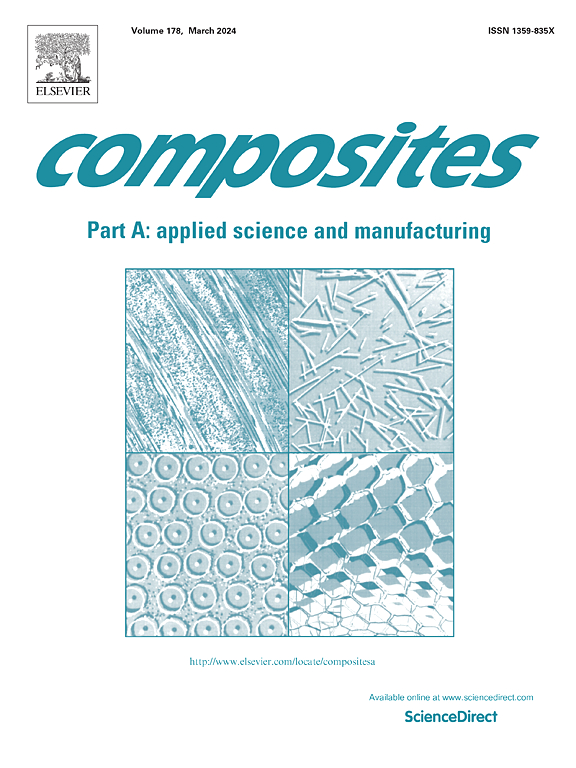Robust and durable collagen-based fibers through dual cross-linking for eco-friendly slow fashion
IF 8.1
2区 材料科学
Q1 ENGINEERING, MANUFACTURING
Composites Part A: Applied Science and Manufacturing
Pub Date : 2025-03-22
DOI:10.1016/j.compositesa.2025.108871
引用次数: 0
Abstract
Slow fashion, as a strategic alternative aimed at mitigating resource waste and environmental degradation in fast fashion, necessitates the development of robust and durable fibers. Collagen-based fibers have emerged as a promising option due to their moisture properties, biodegradability, and biocompatibility for durable textiles. However, these fibers encounter significant challenges in terms of mechanical strength, durability, and viability for sustainable production. In this study, robust and durable collagen-based fibers were designed using a dual cross-linking strategy and continuously prepared in situ via a low-temperature aqueous coagulation device. During wet spinning, polyvinyl alcohol (PVA) and aluminum chloride (AlCl3) act as the continuant and cross-linker, respectively. AlCl3 effectively chelates the carboxyl groups on the collagen molecular chains and the reactive hydroxyl groups on the PVA chains, forming a stable coordination-hydrogen bond dual cross-linking network. Optimization of the spinning parameters resulted in fibers exhibiting superior mechanical properties, with a tensile strength of 339 MPa, Young’s modulus of 12.9 GPa, and toughness of 93 MJ/m3. Additionally, these fibers demonstrate a 10.8 % moisture regain and a dyeing grade of 4, highlighting their enhanced durability and breathability. This research provides robust solutions for enduring fibers and sustainable manufacturing processes in the slow fashion sector, facilitating new opportunities for the sustainable utilization of collagen waste.
求助全文
约1分钟内获得全文
求助全文
来源期刊

Composites Part A: Applied Science and Manufacturing
工程技术-材料科学:复合
CiteScore
15.20
自引率
5.70%
发文量
492
审稿时长
30 days
期刊介绍:
Composites Part A: Applied Science and Manufacturing is a comprehensive journal that publishes original research papers, review articles, case studies, short communications, and letters covering various aspects of composite materials science and technology. This includes fibrous and particulate reinforcements in polymeric, metallic, and ceramic matrices, as well as 'natural' composites like wood and biological materials. The journal addresses topics such as properties, design, and manufacture of reinforcing fibers and particles, novel architectures and concepts, multifunctional composites, advancements in fabrication and processing, manufacturing science, process modeling, experimental mechanics, microstructural characterization, interfaces, prediction and measurement of mechanical, physical, and chemical behavior, and performance in service. Additionally, articles on economic and commercial aspects, design, and case studies are welcomed. All submissions undergo rigorous peer review to ensure they contribute significantly and innovatively, maintaining high standards for content and presentation. The editorial team aims to expedite the review process for prompt publication.
 求助内容:
求助内容: 应助结果提醒方式:
应助结果提醒方式:


